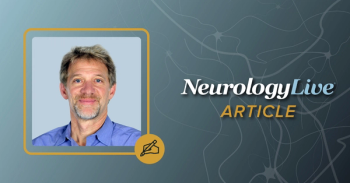
Tofersen Continues to Show Promising Clinical, Biomarker Results in SOD1-ALS
Both the early- and delayed-start tofersen treatment groups demonstrated reductions in SOD1 protein, the intended target for tofersen, and neurofilament, a marker of axonal injury and neurodegeneration.
Treatment with tofersen (Biogen/Ionis), an investigational antisense oligonucleotide, resulted in trends toward reduced disease progression and reductions in total SOD1 protein and neurofilament light in patients with superoxide dismutase 1 (SOD1) amyotrophic lateral sclerosis (ALS), according to new data from the phase 3 VALOR study (NCT02623699).1
It was previously reported that the agent did not meet its primary end point of statistically significant change from baseline in Revised Amyotrophic Lateral Sclerosis Functional Rating Scale (ALSFRS-R) score after 28 weeks of treatment (difference, 1.2 points; P = .97). Despite this, tofersen continued to demonstrate positive effects across multiple secondary and exploratory end points that were observed over a 12-month treatment period.
The study featured 108 participants with SOD1-ALS who were randomly assigned to either tofersen 100 mg (n = 72) or placebo (n = 36). Of these participants, 95 enrolled in the ongoing open-label extension (OLE). At the time of the analysis, all participants had an opportunity for at least 12 months of follow-up, with a median exposure to tofersen of approximately 20 months (range, 1-34). The new 12-month data compared early initiation of tofersen (at the start of VALOR) with delayed initiation of tofersen (6 months later, in the open-label extension).
Over 12 months, results favored earlier start tofersen on several measures, including clinical function, as assessed by ALSFRS-R score (difference, 3.5 points; 95% CI, 0.4-6.7). These patients also demonstrated more favorable outcomes on respiratory function, as measured by slow vital capacity (difference, 9.2% predicted; 95% CI, 1.7-16.6), muscle strength, measured by the handheld dynamometry megascore (difference, 0.28; 95% CI, 0.05-0.52), and quality of life, as measured by the 5-item ALS assessment questionnaire (ALSAQ-5; difference, 10.3 points; 95% CI, –17.3 to –3.2).
"We are very pleased with these new 12-month data, which show that tofersen slowed disease progression and lowered neurofilament levels. Together, these results offer compelling evidence of tofersen's potential to provide meaningful clinical benefit to people living with SOD1-ALS," C. Frank Bennett, PhD, executive vice president, chief scientific officer, and franchise leader for neurological programs, Ionis, said in a statement.1
READ MORE:
In the early- and delayed-start tofersen groups, patients demonstrated reductions of 33% and 21% in SOD1 protein, the intended target for tofersen, and 51% and 41% in plasma neurofilament light, a marker of neuron injury, respectively, at the 12-month time point. Early survival data suggested a lower risk of death or permanent ventilation (PV; HR, 0.36; 95% CI, 0.137-0.941) and death (HR, 0.27; 95% CI, 0.084-0.890) with earlier initiation of tofersen. Of note, the median time to death or PV, and median time to death, could not be estimated because the majority of participants survived without PV.
Across VALOR and the OLE, the most common adverse events (AEs) for patients who received tofersen were headache, procedural pain, fall, back pain, and pain in extremity, most of which were mild to moderate in severity. Serious AEs were reported by 36.5% of participants on the study drug and led to discontinuation for 17.3% of participants. Serious neurologic events, including myelitis, radiculitis, aseptic meningitis, and papilledema, were observed in 6.7% of the cohort on tofersen. Additionally, there were 14 deaths reported in tofersen-treated patients in VALOR and the OLE, but none were considered related to the study drug.
VALOR has multiple objectives and is built in a 3-part design. Part A was a single ascending dose component, while Part B was the multiple ascending dose component. Part C is the fixed-dose portion, making the overall phase of development as 1/2/3. The
Over a period of 12 weeks, the difference in the change from baseline in cerebrospinal fluid SOD1 concentration favored that administered with intrathecal tofersen, which was assessed in a number of doses—20 mg (n = 10), 40 mg (n = 9), 60 mg (n = 9), and 100 mg (n = 10)—compared with placebo (n = 12). All told, at Day 85, differences between the tofersen groups and placebo were 2 percentage points (95% CI, −18 to 27) for the 20-mg dose, −25 percentage points (95% CI, −40 to −5) for the 40-mg dose, −19 percentage points (95% CI, −35 to 2) for the 60-mg dose, and −33 percentage points (95% CI, −47 to −16) for the 100-mg dose. Respectively, the geometric mean ratios of the SOD1 protein concentrations among participants who received tofersen decreased overall by 1%, 27%, 21%, and 36%. Comparatively, among those who received placebo, the ratio decreased by 3%.2
REFERENCES
1. Ionis partner Biogen announces that results from phase 3 VALOR study and open-label extension of tofersen showed clinical benefit in SOD1-ALS patients. News release. June 3, 2022. Accessed June 22, 2022. https://www.prnewswire.com/news-releases/ionis-partner-biogen-announces-that-results-from-phase-3-valor-study-and-open-label-extension-of-tofersen-showed-clinical-benefit-in-sod1-als-patients-301560770.html
2. Miller T, Cudkowicz M, Shaw PJ, et al. Phase 1—2 Trial of Antisense Oligonucleotide Tofersen for SOD1 ALS. N Engl J Med. 2020; 383:109-119. doi: 10.1056/NEJMoa2003715
Newsletter
Keep your finger on the pulse of neurology—subscribe to NeurologyLive for expert interviews, new data, and breakthrough treatment updates.



























